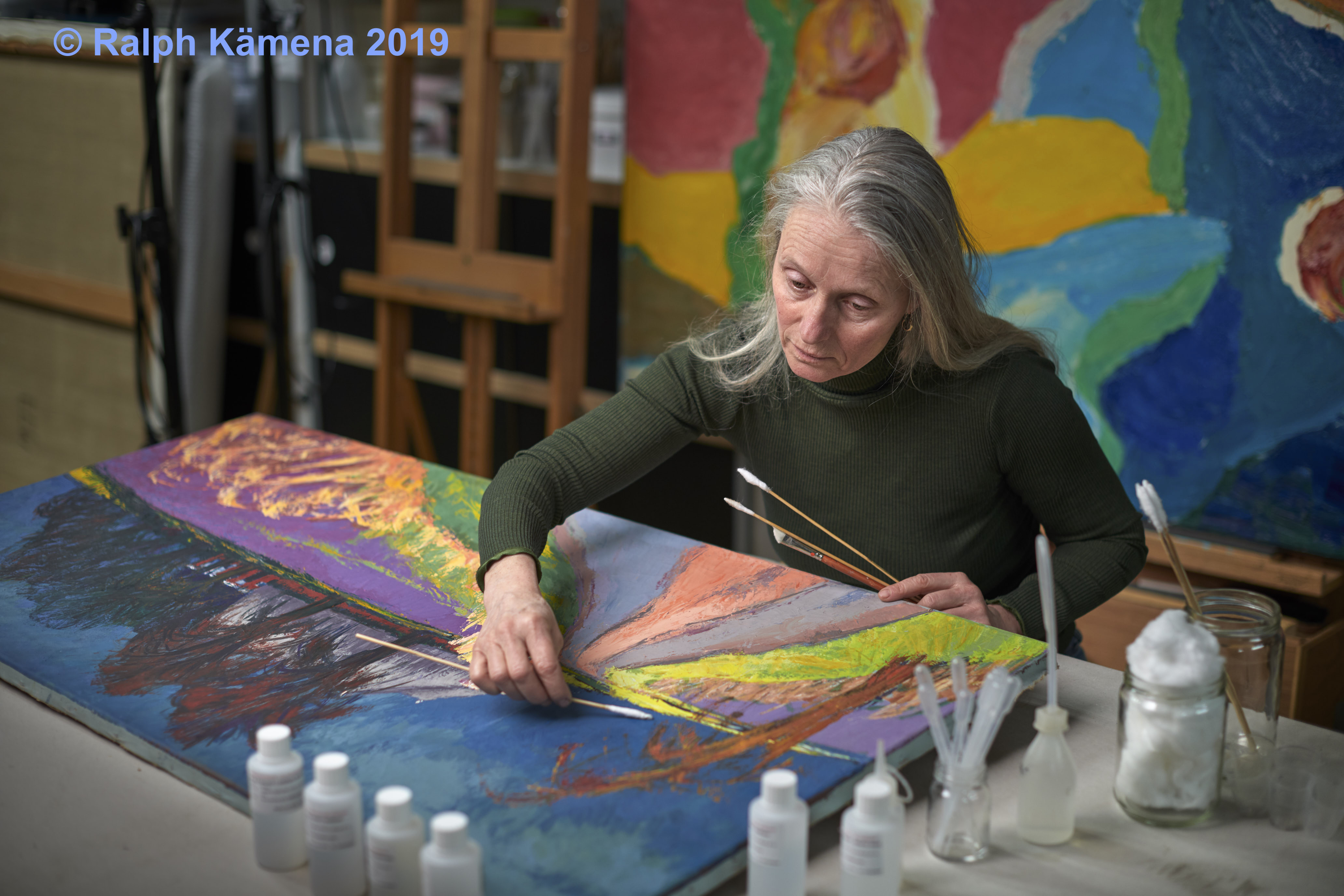
Family Louis Trip
The Hoogeland Open Air Museum has a painting by Roelof Koets II on loan from the Trip Family.
Roelof Koets II painted Louis Trip who, together with his wife Christina, are standing in front of the Warffumborg. In addition, they are surrounded by their children in allegorical clothing or, if they were deceased, as an angel. Roelof Koets II painted this family portrait at the end of the 17th century. He was very adept at this, as evidenced by the number of well-known family portraits.
The Warffumbor in the Hoogeland Open Air Museum

It is special that the Warffumborg is featured by Roelof Koets II in this painting, which is why the Hoogeland Open Air Museum has a special place for it. In the recently launched plans of the museum, it will be part of the story of Groningen and the Ommelanden. Of course it has to look very good for that!
Condition
First, the painting was examined in a house at the open-air museum. The conditions have been viewed and described. It is clear that this painting has a history. So much paint has been lost and more has been added. This may be why it was given a second canvas in the 19th century that was glued with a thick layer of wax/resin.
During the research, also tests for cleaning and varnish removal were executed by Marjan.




Under UV light it is clearly visible that the varnish has been applied very irregularly. Thick layers of new varnish, and careless removal of old varnish. There’s a lot to see in UV, even the overpaints.

Varnish reduction
During varnish removal, a yellow/brown transparent layer was removed. This can be done with a technique in which a polar solvent in an absorbent tissue is placed on the surface so that the varnish dissolves and absorbs into the tissue. It sounds very simple, but the choice of resources, time, format is and remains a precision job.


Reduction of polluted beeswax
After removing the varnish, it appears that there is still a haze on the paint layer. I know this not only from experience but also from looking closely. It is the remnants of beeswax that have been drawn into the paint layer by the lining. New tests with other cleaning techniques such as gels and emulsions have been applied to remove this sticky greasy layer so that the bright colours emerge again.



Filling and retouching of damaged paint layers
When all non-original layers of dirt, varnish, overpaint and beeswax have been removed, we see the painting again. It’s stripped state. From this state, we re-assess the painting to determine how we are going to restore.
A new insulating varnish to saturate the paint so we can see the colours clearly. This way we can fill in the missing parts. Filling the gaps with a filler and a small spatula is the first step. Now we can clearly see all the damaged and missing spots of paint. This precise filling takes a lot of time, many hours of application and smooth adjustment.

When these fills are saturated, retouching follows, mixing the correct colour to match the surrounding paint layer. Dot after dot, the paint layer is added, just like a puzzle. In between, one or more coats of varnish are needed to saturate the additions again and again.

The finish
The word says it all, the last layer of varnish. This has been sprayed to prevent the previous layers of varnish and retouches from dissolving. For all layers of varnish we choose again which resin to use and which method is suitable. We make all varnishes ourselves by mixing a synthetic resin in a specific concentration in the solvent.
Not only the concentration but also the technique of application is important. With the brush or with the spray. All choices determine the end result. And that end result not only depends on the condition of the painting, but also on the knowledge and skills of the restorer.

Noa Kollaard
Thank you Noa for your cooperation, those many hours of work…filling and retouching for the perfect result
Acknowledgments The Hoogeland Open Air Museum
With thanks to the foundation of the Trip family and the Rembrandt Association who made this restoration possible for the Hoogeland Open Air Museum.







